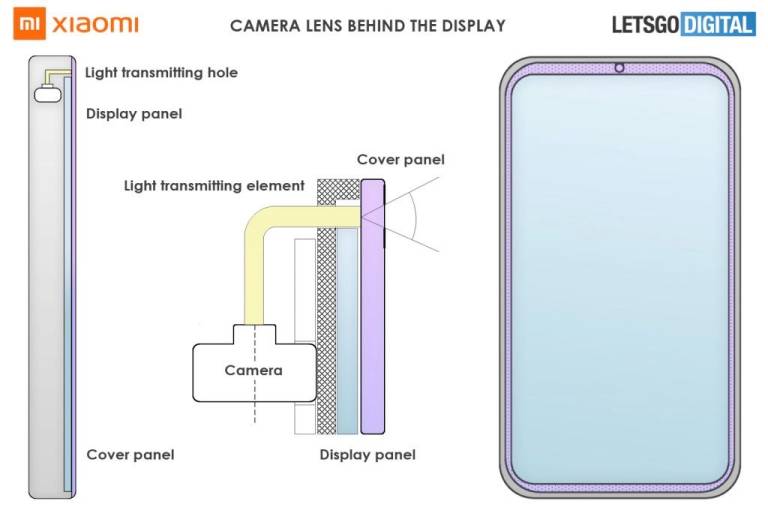The illusory all-screen phone design is no longer just a dream. iPhones have a notch at the top, whereas Android handsets come with hole-punch selfie cameras. These are necessary compromises between form and function. We need cameras and sensors on the front side of the screen, but we also want the display to occupy as much real estate as possible. The “perfect” smartphone design is already in development. More phones with cameras under the screen are coming this year, after the world’s first such device launched in 2020. But some handset vendors came up with a novel way to place the selfie camera behind the display.
Phones with under-display cameras aren’t the same as phones with the selfie camera behind the screen, even though it might seem like it’s the same concept.
When we say under-display cameras we mean selfie cameras that are identical to current selfie cams when it comes to placement. We might also refer to them as in-display, under-screen, or under-panel cameras. They sit vertically, but they’re placed right under the OLED display. When using the selfie camera is in use, the OLED layer stops displaying images to allow light to pass through to the camera sensor.
After the ZTE Axon 20 last year, we might see more phones with under-display cameras this summer, starting with Samsung’s Galaxy Z Fold 3. Samsung already has a marketing term for it — Under Panel Camera (UPC).

Selfie camera behind the display
Placing the selfie camera behind the display is a different concept, as seen in the image above. The camera is still located under the screen; that’s why it might all be confusing at first. But the light will not pass through the OLED display layer. The camera will be rotated in this particular case. We’re looking at a sensor sitting horizontally behind the screen.
The light reaches the sensor from a tiny camera hole opening that sits in a small bezel at the top of the handset. The light might reach the camera via optical fibers or a prism. A prism is also used for a different type of phone camera that’s rotated inside the phone. That’s the telephoto lens equipping devices with periscope cameras.
The images above come from a Xiaomi patent awarded to the Chinese company in early June in Europe and the US. Found by Dutch blog LetsGoDigital, the document offers a viable alternative to the under-display camera tech we eagerly await.
Under-display cameras sound great in theory, but the selfie quality might take a hit. That’s not the kind of compromise smartphone users want. Placing the selfie cameras behind the screen like Xiaomi proposes might offer the best of both worlds. The display won’t get a camera hole, and selfie photography won’t require corrective algorithms. There might be a different sort of compromise. The top bezel might be slightly thicker than before.
That’s not to say that Xiaomi will manufacture a phone with a selfie camera placed behind the screen anytime soon. But the Chinese vendor is certainly looking at different options. Xiaomi will launch its own phone with an under-display camera this year, other rumors claim.








